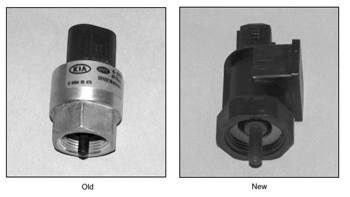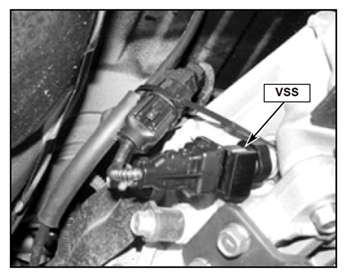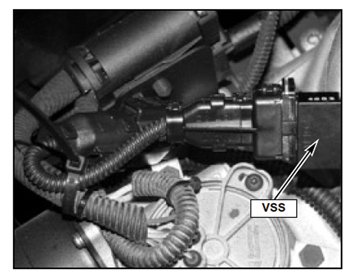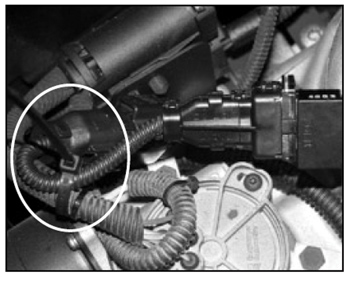 This bulletin provides information relating to the service of the vehicle speed sensor (Fig. 1) and adapter cord. Sorento EX vehicles produced before Oct. 6, 2004, may intermittently have variations in the level of power assist during driving or parking. Diagnostic trouble code (DTC) C1012 may be stored in the EPS control module.
This bulletin provides information relating to the service of the vehicle speed sensor (Fig. 1) and adapter cord. Sorento EX vehicles produced before Oct. 6, 2004, may intermittently have variations in the level of power assist during driving or parking. Diagnostic trouble code (DTC) C1012 may be stored in the EPS control module.
Note: The repair procedure in this technical service bulletin should only be performed on customer complaint vehicles.
Repair Procedure:
1. Remove and replace the vehicle speed sensor in the transmission on 2WD vehicles. See Fig. 2. Torque the new speed sensor to 60 in.-lbs. or 7.5 Nm. 
2. If the vehicle is equipped with 4WD, remove and replace the vehicle speed sensor in the transfer case. See Fig. 3. Torque the new speed sensor to 60 in.-lbs. or 7.5 Nm.
3. Install a new vehicle sensor adapter cord to the new sensor. Connect the vehicle harness, then  tie-up the wiring with a tie-strap to prevent vibration and interference as shown in Fig. 4.
tie-up the wiring with a tie-strap to prevent vibration and interference as shown in Fig. 4.
4. Connect the Hi-Scan Pro to the underhood DLC only.
5. Select Elec. Power Steering and press Enter.
6. Select Diagnostic Trouble Codes and press Enter.
7. Clear diagnostic trouble codes, as necessary.
Part Number Information:
Description
Old P/N
New P/N
Vehicle Speed Sensor
0K60A 55475
96420 4A600
Cord-Speed Sensor
N/A
91400 3E999
Courtesy of KiaTechInfo.com.













